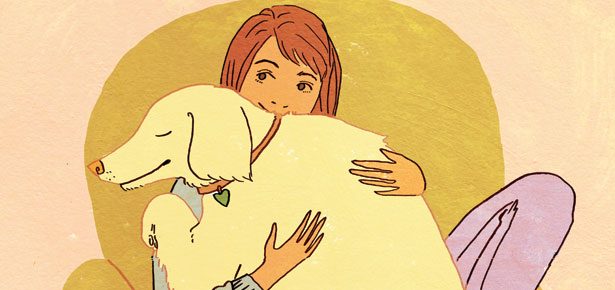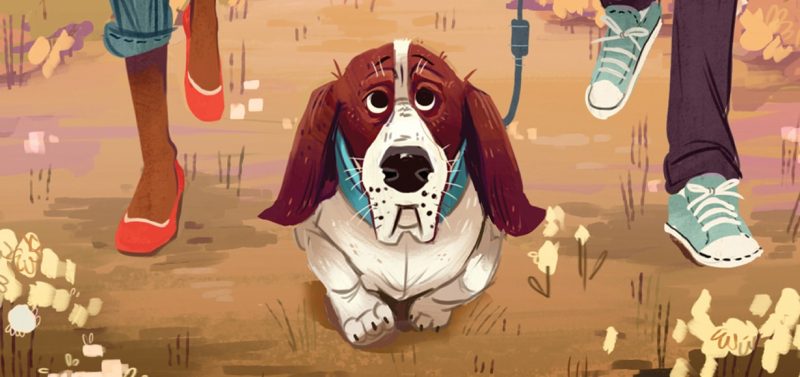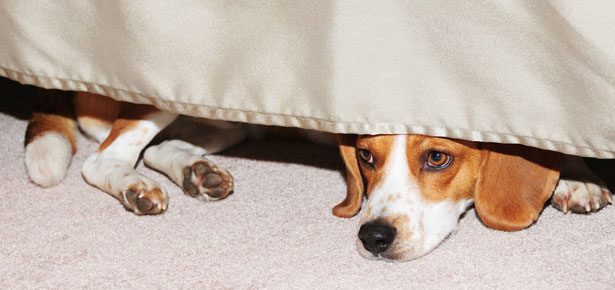

How to Improve Your Bond With Your Dog
Understanding the human/canine connection and how to make your bond stronger
In 1924, a Japanese professor named Hidesaburo Ueno would each morning say goodbye to his dog Hachiko then walk to the train station to head for work. At three o’clock, Ueno would return home to find Hachiko sitting by the tracks, waiting for him. Every day for over a year, the big Akita would be there, waiting.
On a day in May of 1925, Hachiko walked as usual down to the station to wait for Ueno’s return. But, sadly, the professor had suffered a fatal cerebral hemorrhage at his school that day. He would never again return to his faithful Hachiko.
Though given to another family, Hachiko escaped each day and returned to the professor’s home in hopes of finding him. When this failed, the dog began the old ritual again, arriving each day at the station at precisely three o’clock, to wait. Hachiko did this every day for the next ten years until his death.
The Ancient Bond
Hachiko’s incredible connection to Ueno is an example of the compelling power of the human/canine bond. But other stories of canine loyalty abound: dogs who travel thousands of miles to rejoin their lost families; dogs who save drowning people; military dogs who sacrifice themselves to save their human partners; dogs who pull people from burning homes. The stories are legion and not uncommon.
What is this bond between us? Is it mere allegiance or simply a desire to guarantee a decent meal and a place to sleep? Is it obedience? Would a dog really walk across the country to rejoin its family simply out of compliance or for a meal? Do dogs routinely risk their lives for a bone or run through fire for a comfortable place to rest? Clearly, the magnetism goes much deeper than that. The human/canine bond is an ancient, mutually beneficial rapport formed between us, one based upon millennia of domestication and partnership. For over 20,000 years, we have bred dogs not only for hunting, herding, protection, and companionship, but also for loyalty, devotion, tameness, and emotional support. This resulted in a fellowship not seen between any two other species. Though we are genetically closest to apes, I would posit we stand emotionally closest to canines.
The Solidarity of Work
Different factors contribute to the existence of the human/canine bond.
The dog’s amazing, ancient work ethic, for instance, is part of what makes our bond so strong. The age-old desire of a retriever to fetch and retrieve a bird, for instance, is done not for food, but for the hunter’s affections. The human/canine bond, though, is found not only in hunting breeds, but in all types of dogs, no matter what they were bred to do. The herding dog and her relationship with her shepherd; the police dog and her K-9 officer; the search-and-rescue dog and her handler—the innate desire to work with humans has been hard-wired into our canine friends.
The Rescue Factor
Dogs saved from dire circumstances often exhibit an intense connection with the rescuer. It can often be so pronounced that it results in stress for the dog; separation anxiety, destructive behavior, and fear of abandonment can sometimes become profound. This derives from the anxiety developed from being abandoned one or more times by persons who the dog thought were devoted, bonded partners. But once rescue dogs find a reliable, devoted person and are properly trained, cared for, and loved, they often become the most connected, passionate partners a human can ever know.
Affecting the Bond
The human/canine bond is a deeply rooted understanding, measured in emotion, dependability, and mutual support. It is a need to belong and to feel wanted, useful, and safe.
Vary these parameters, though, and you affect the bond. Fail to give your dog affection, routine, dependability, training and boundaries, and you will weaken that unspoken connection. Abuse or ignore her, or fail to see to her basic needs and you could sabotage the intimate link that time has so artfully established. Anything that makes your dog feel unwanted, neglected, or afraid will lower the strength of the human/canine bond.
Strengthening the bond is just as predictable. Spending time together builds trust, confidence, and love, and creates a feeling of familial belonging—the roots of the bond. Activities—travelling together (4Knines makes travel easy with a great seat cover with fold-down sections), walking, hiking, training, playing—these are things which pull you both closer into each other, nurturing that intimacy. And obedience training, though not the primary promoter of bonding, provides the dog lover with a way to communicate, essential to any relationship. Once you both speak the same “language,” you can develop the trust and confidence necessary for your dog to feel that special loyalty toward you. Also, training helps your dog to focus on you and ignore the many distractions that might be present. That focus is essential to building any relationship, especially the one with your dog.
Find Out if you Have a Strong Bond with Your Dog:
Take our Quiz!
Signs that Your Bond is Weak
Even though you may be a caring, considerate person, your dog might still not feel a close bond with you. Signs of a weak bond include:
- Emotional indifference to you or others in the family A failure to respond to commands, especially the recall command
- A lack of desire to play
- A distaste for being handled
- Regular attempts to run off
- Poor focus and eye contact
- Belligerence or even outright aggression toward you
- Depression or lethargic behaviour
Note that a recently rescued dog could show some or all of these symptoms as she might still be grieving for her past owner or may simply be depressed over the unpredictability of her life to date. Give her time.
Signs of a Strong Bond
There’s no mistaking a dog who feels a real emotional connection with you. There’s a real light in her eyes; she smiles, wags, rubs into you, and makes great eye contact. When you come home, she brightens up, becomes animated, and may even vocalize her joy. Other signs of a strong bond include:
- Keeping tabs on your location when she is off leash
- Checking in to see where you’re at frequently
- Performing obedience happily without hesitation
- Making a great effort to find you when you play hide-and-seek
- A desire to be near you
- Matching her pace to yours when walking
- A high level of focus on you, evidenced by frequently looking at you
- Strong ability to communicate needs, wants, and concerns. (Do you understand what your dog wants in almost any given situation?)
- A willingness to protect or help you in a threatening situation
- A love for physical interaction
- Always coming when called, even with distractions present (This one is tricky even for well bonded dogs. If you’ve got this down even in the most distracting of circumstances, good on you!)
A dog who is strongly bonded to you will happily accede to your desires, even if she wants to do something else, like stay longer at the dog park.
How to Strengthen the Bond
If you suspect the bond with your dog is not as strong as it could be, there are steps you can take to remedy this. First, if you have recently adopted the dog from a shelter, understand that it takes at least a few months for a rescue to adjust to her new home and to get over the grief of losing touch with her former family. During this time, be sure not to let her off-leash outside, as she might take off to find her old group. Make sure your fencing is up to the task as well.
Next, you can:
- Start obedience training (come, sit, stay, down…) if you haven't already and keep it up. This will create good communication between you, help your dog focus, and foster a sense of teamwork and belonging.
- Ramp up activities with her. Playing, retrieving, agility, swimming—whatever the two of you can have fun doing together. Like kids at the schoolyard, fun interaction builds friendship and loyalty. Dogs are like toddlers, they like to be engaged and played with.
- Work the recall command or “Come” often. Do so first on a leash or long lead and only graduate to off-leash when your dog comes back to you every time on the lead, even with distractions. Succeeding at this will be proof of her focus and loyalty and of her desire to do what you ask instead of what she wants. When working off-leash recalls, don’t stay in one spot; instead, run away from her to make the exercise into a game and boost her desire to be with you.
- Play “hide-and-seek” with her often, in or out of the home. This fun game is a great way to make you into a “reward” for her. Over the months, it will slowly increase her desire to be with you and to pay attention.
- Feed her at specific times during the day, instead of free-feeding (leaving food down all day). This will make her food drive more focused and predictable and will link it to you. You become more important when the food comes from you instead of the bowl.
- Teach her a trick every month. This fun activity will make her smarter and become another bonding tool in your repertoire.
- Create in her a sense of purpose. Dogs want to work, so make your walks, play times, and training sessions all seem as if they are focused, fun, and important.
- Socialize her with people and dogs, but always look out for her wellbeing. By being a caring, vigilant mentor, you’ll build her trust and confidence and raise her opinion of you.
- Groom and pet her regularly to desensitize her to touch and to build up her desire for physical affection.
- Travel more frequently together. Create breaks where you both can spend quality time together, whether it's driving in the car to go for a hike you've never tried before or going camping for the weekend.
Honouring, reinforcing, and increasing the bond between you and your dog will help her, and you, too. You’ll feel calmer, happier, and more appreciative of the good times the two of you enjoy together. Above all, be affectionate, supportive, interactive, and fun, because that’s what the canine/human bond is all about.
Join the newsletter and never miss out on dog content again!
"*" indicates required fields
By clicking the arrow, you agree to our web Terms of Use and Privacy & Cookie Policy. Easy unsubscribe links are provided in every email.





